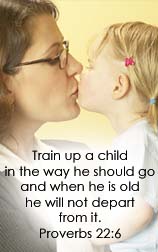The older girls and I had the opportunity to review the book The Master and His Apprentices: Art History from a Christian Perspective from The Master and His Apprentices. I'll start right off by saying I almost opted out of this review because it is high school level material. However, when I realized it covered events, places, and objects that we had learned about this past year with our Core Curriculum, I sort of changed my mind and begged to try it out.
We received a digital copy of this art history textbook, along with a digital copy of the Teacher Guide for The Master and His Apprentices. The books are also available as physical books, though the hardcover text is over $100 more and the softcover Teacher Guide is $5 more than the digital. I admit, if I could afford it, I would much rather have a physical book to flip through, but we have been able to view the digital copy just fine on our computer, the recommended way to view this fixed-layout PDF. Additionally, it is stated on the website that a large tablet will work for viewing purposes. If you would prefer to purchase the digital copy, yet would like to hold a physical book, you can print the textbook and store it in a 3-ring binder. The layout is binder-ready for this option. As that would use a lot of paper and ink, that option was not something I felt I could do as the textbook is 380 pages long! Now, as for the Teacher Guide, that I have been printing out, a couple of pages at a time. When you purchase the book you actually have the license to print/photocopy the information for one child. If you need the information for more than one child there is a $2 fee per child. As a member of the Homeschool Review Crew I was thankfully given print/photocopy rights for our entire household.
I loved the thought of introducing the girls to art in history from a Christian perspective, especially because it states that there is no nudity, something the children have inadvertently been exposed to in a few books we had out from the library to go with our study of Ancient Greece here at the end of the school year.
The Master and His Apprentices covers creation through modern times, though there is only a brief mention of the last few hundred years, with only 16 pages after the chapter on the Baroque period. The book starts with an introduction to art, stating that God is the Master and all other artists are the apprentices as they can but copy what God has done in His creation. Personally, I love this view of art, though I had never really thought of it that way before. I love that the author is coming from a literal biblical viewpoint.
Okay, so what exactly is contained in this book? I will say, right from the get-go, that there is a LOT more than just art in this book, a lot more history and even science than I expected. To me it feels more like a history book with the bonus of artwork being included throughout, over 600 works of art at that. So yes, you are seeing and learning about the art, but you are getting a lot of detail about the time period surrounding it as well, all from a Biblical perspective.
The Master and His Apprentices is divided into six sections plus an appendix.
- The Beginning
- Ancient Cultures
- Classical Antiquity
- Middle Ages
- Renaissance
- Baroque Era & Beyond
- Appendix
Ancient Cultures is the section we focused on during the review period as I wanted to use it as a bit of a review here at the end of the school year. The three chapters in the Ancient Cultures section are:
- Chapter 3: Ancient Near East
- Chapter 4: Egyptian
- Chapter 5: Aegean
During the summer we are going to focus on the first part of Classical Antiquity as we will be finishing up our previous school year's material which is on Ancient Greece. The three chapters in the Classical Antiquity section are:
- Chapter 6: Early Greek
- Chapter 7: Etruscan
- Chapter 8: Roman
Next year I plan to use The Master and His Apprentices concurrently with our core curriculum as we will be learning about the time of Rome through the Reformation. We will be able to enhance our studies with the Roman chapter from Classical Antiquity, plus the section on the Middle Ages which contains the following chapters:
- Chapter 9: Early Christian & Byzantine
- Chapter 10: Medieval & Islamic
- Chapter 11: Romanesque
- Chapter 12: Gothic
We will even be able to utilize the Renaissance section this coming year. This section contains the following chapters:
- Chapter 13: Proto-Renaissance
- Chapter 14: Early Italian Renaissance
- Chapter 15: High Italian Renaissance
- Chapter 16: Northern Renaissance
And in future years we will be able to use the concluding chapters, which are:
- Chapter 17: Baroque
- Chapter 18: Rococo to Today
- Chapter 19: Global Highlights
Additionally, I can most definitely see pulling this book out again when the children are in high school and can appreciate all the details. It will be a wonderful supplement to their history and can count as an art credit (From my understanding. I admit, I haven't quite looked into how all those credit things will work as my oldest is only 11 years old.)
The Appendix is chock-full of information from a letter from the editor, to the gospel message and skepticism in creationism. There is a full timeline which includes all the works of art plus historical/Biblical events, plus a timeline of the different art periods.
Now, let's dig a little deeper.
Each chapter starts with an overview of the time period, before going into more detail of each featured work of art.
As I stated, I personally spent some time in the Creation section of the textbook, though I didn't utilize the study guide. I loved reading the details of God's creation, how God is such a master of detail. His creation should cause us to see His mighty power and lead to us praise Him.
After each chapter's overview we found the sections that focus on the specific work of art. The topic of interest is in a box at the top of the page, under which is listed the area where it is found and the kind of art it is, plus the approximate date.
The children and I spent our time in the Ancient Cultures section of The Master and His Apprentices. Personally, I enjoyed learning more information about things we learned about this past year, such as Noah's Ark, the ziggurats, and the Law Code of Hammurabi. Yes, we talked about these things previously, but this book gave us more details.
I printed out the question sheet from the Teacher Guide that was relevant for the chapter we were reading. I would then skim the chapter to see what information I would need to read to answer the questions. Sometimes we would skip questions that required information that I felt was over the girls' heads. The girls sat on the couch or loveseat while I read from the book on the computer.
We would read the question to figure out what we were looking for, and then I would read the section of the book, hoping the children would figure out what the answer was. Sometimes they caught it, sometimes I had to give them the answer. The material is definitely over their comprehension level, so I can understand that they had trouble trying to determine which information was the actual answer. A lot of the details were in regard to the historical information, where they were hoping for more specifics about the actual art.
I would ask them to help me word the answer, guiding them where they needed help, and then I would type out the answer in our word processing program, making the font large enough for them to see from the couch/loveseat. I have found that it makes a great "whiteboard." They then copy the answer into the blanks on the page.
A high school student would be required to read either a full chapter or a half a chapter in a week, and then they would be expected to have these questions answered. The girls and I were able to get through the chapter on the Ancient Near East and have started the chapter on Egypt during this review period.
I really appreciate the timelines that are included in each chapter. Unlike the timeline that is in the appendix, there are three sections to these chapter timelines. The top shows important world events, the middle section lists the famous artwork, and the bottom section lists the major Biblical events that would have been taking place at this time.
The Master and His Apprentices is a wealth of information in regards to both history and art in history. It is most definitely more appropriate for older students, I would say at least middle school. Tabitha, who is 11, was able to understand a lot more than Amelia, who is 10. Unfortunately they were both bored while I was trying to find topics of interest to read to them. Personally, I love reading about the details surrounding the art, learning where they fit into history, and especially re-confirming God's majesty. I definitely plan on using it to supplement our curriculum, but I think I may have to limit what I read even more. And when the children are in high school, I will definitely have them work through the book in more detail.
So, would I recommend this book for a family with only young children? Probably not. But if you have children who are in middle school, I would definitely give it a shot. Of course, you know your children the best. As for high school students? I would say The Master and His Apprentices is a wonderful art history book for Christians, and will help students see God's amazing love and his plan in history.
Don't forget to click the banner below to see what my fellow Crew Mates had to say about The Master and His Apprentices.



































![[PREMIO2009.png]](https://blogger.googleusercontent.com/img/b/R29vZ2xl/AVvXsEjXD_Gx-wZ9EM5hXKrEYLksEBkYfRQtmb8VDVTDG_yyLggQoFIstZsh4zszdG20KqErZicRzEhiNYLty7j3IMXJYsABqkXjr8pp-ncj71xCbpxlXGbGpZq2fTuDQqq1RMKV4DPcDBnBViA/s1600/PREMIO2009.png)




No comments:
Post a Comment
Thank you for visiting my blog today. I love to read your comments, so please leave me one if you have the time.
Blessings